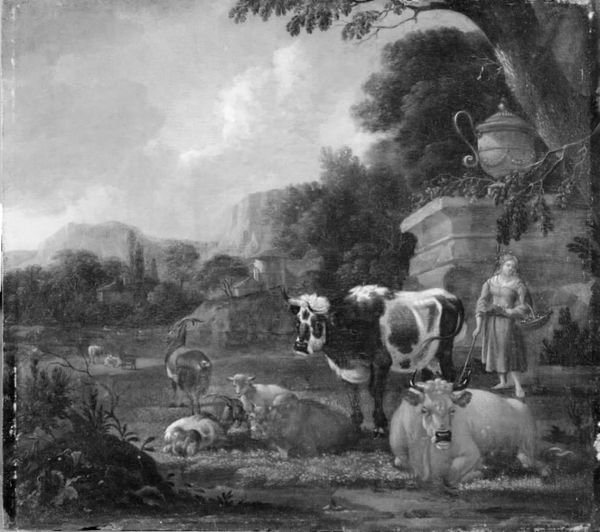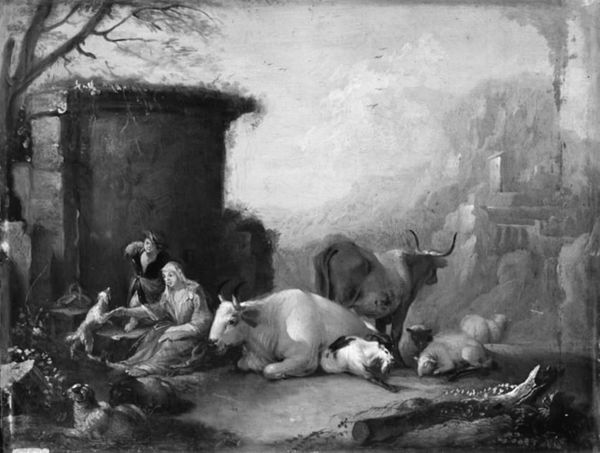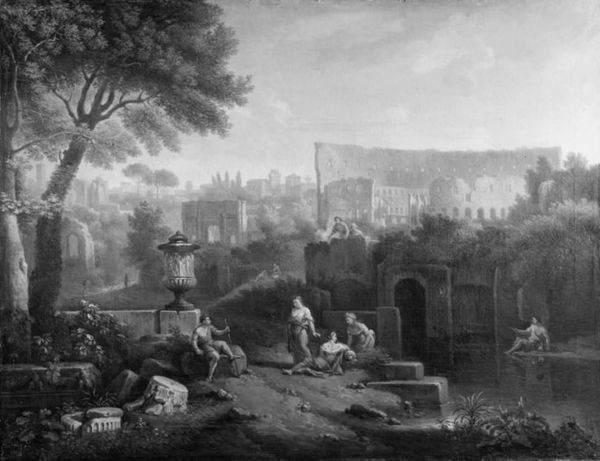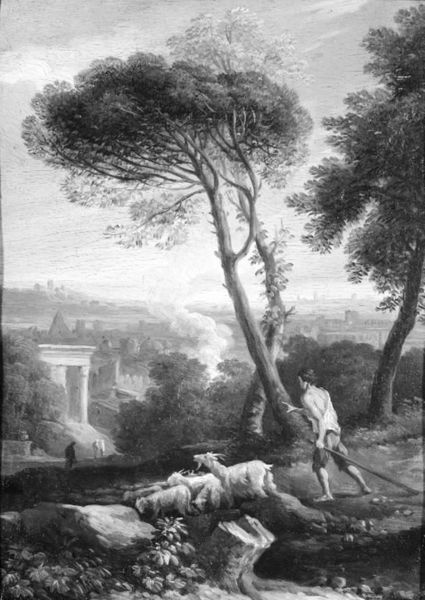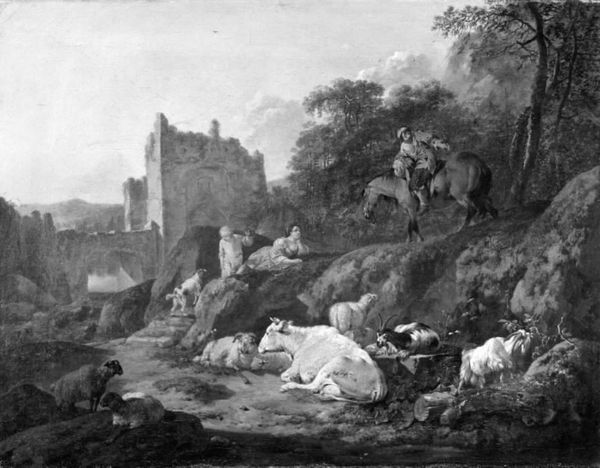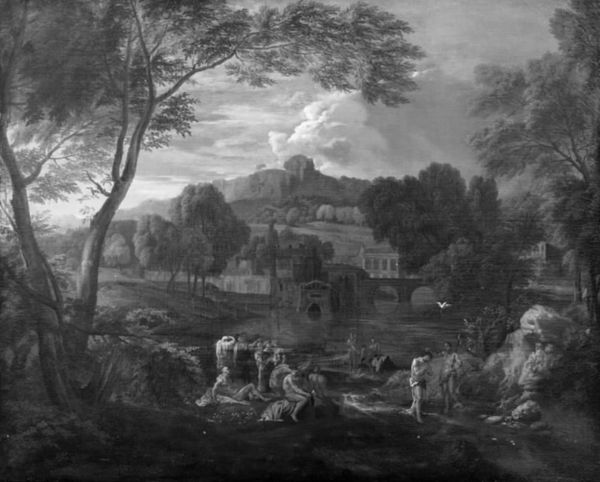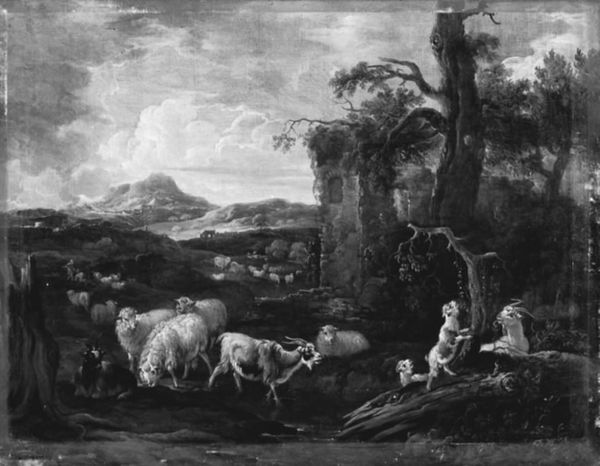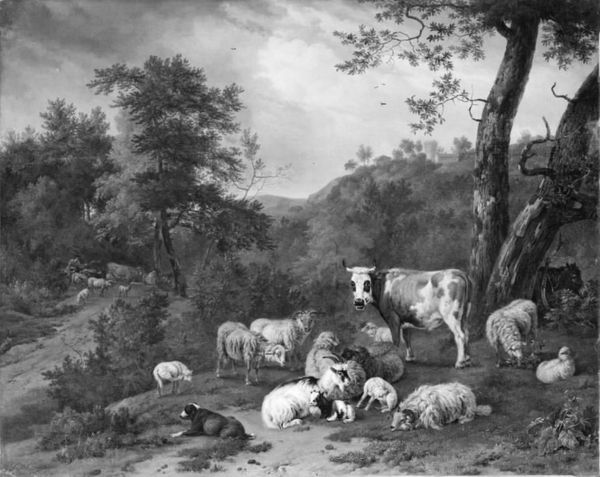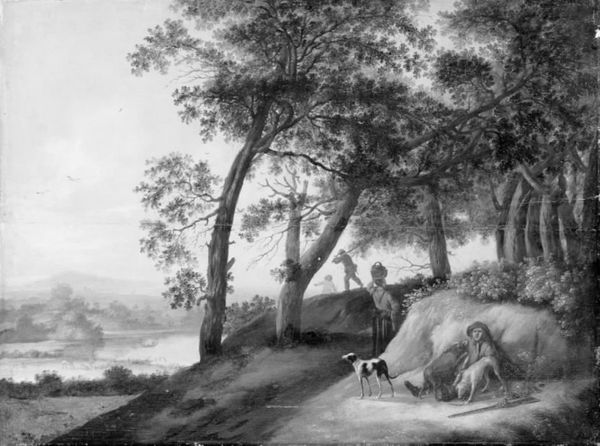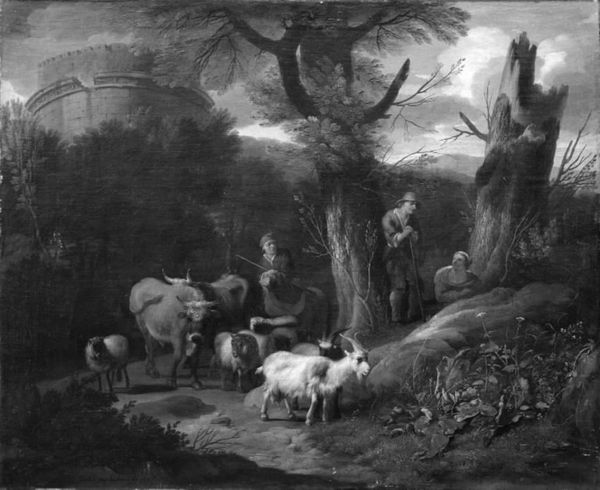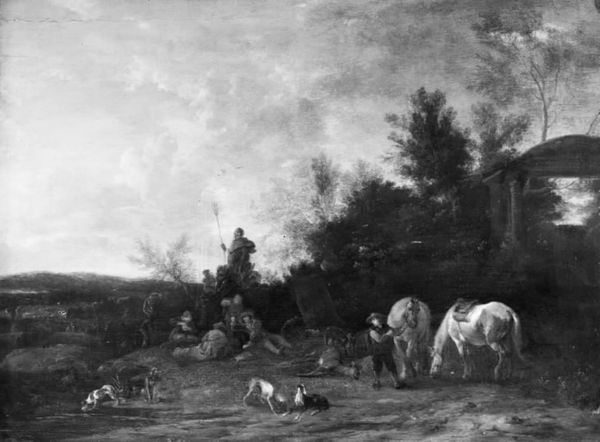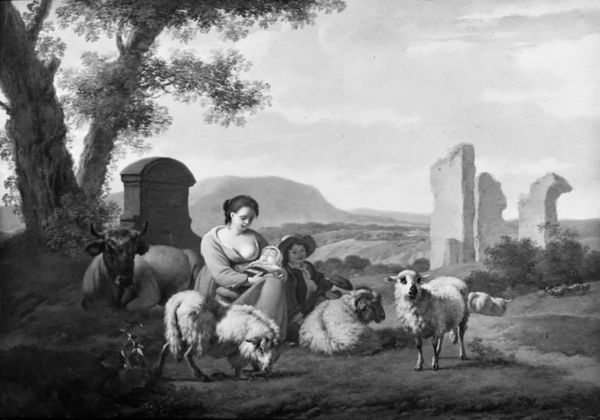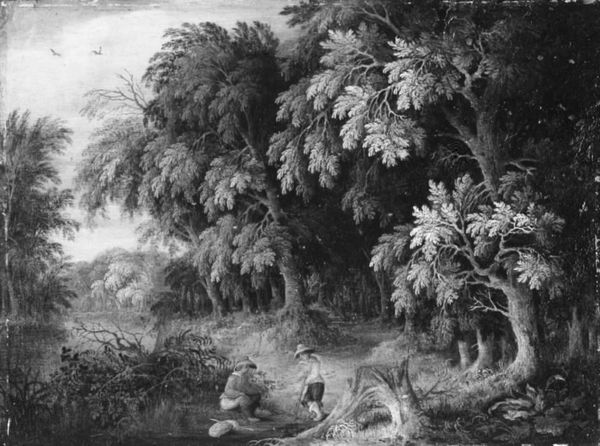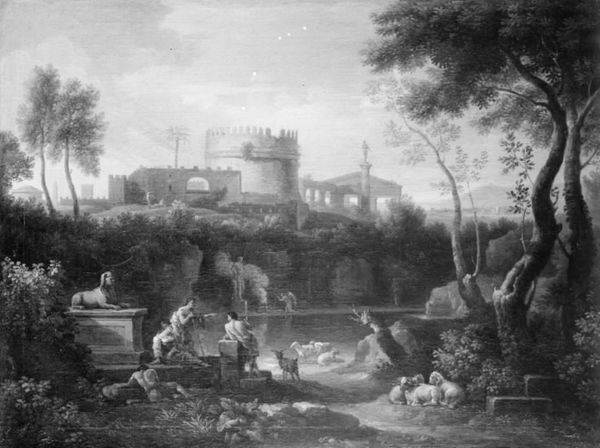
painting
#
baroque
#
painting
#
countryside
#
landscape
#
figuration
#
black and white
#
monochrome
#
monochrome
Dimensions: 45.5 cm (height) x 54 cm (width) (Netto)
Curator: Welcome. Before us is "Sheep and Goats" by Jacob van der Does the Elder, likely painted between 1638 and 1673. Editor: It’s overwhelmingly monochrome; the values are very tight. The entire scene reads like a faded memory or a scene caught between sleep and wakefulness. Curator: Note how Van der Does arranges the elements; the robust tree on the left balances the dilapidated structures on the right. What symbolic function may be at work there? Editor: Considering the title, one immediately thinks of biblical narratives—parables involving shepherds, flocks, and the moral sorting of people into categories of good and bad. But beyond that, sheep often symbolize innocence, humility, while goats represent something…untamed, perhaps, or even lustful. Curator: The light enhances the composition significantly. Notice the way the diffuse light washes over everything, blurring the edges, but also the sharp contrasts highlighting key figures like the attentive goat in the foreground. Editor: Indeed. It draws your eye to those alert goats. Also consider that the architectural ruins could be read as a vanitas symbol: a reminder of mortality, of the transience of even the grandest structures. Everything decays. Curator: Perhaps the juxtaposition of the dilapidated classical ruins with the present vitality of nature represents cyclical themes of death and rebirth? Editor: Exactly. Even the monochromatic palette feels symbolic—stripping away color seems to suggest a focus on universal or perhaps timeless themes. There is the young human figure near the ruins. What could he or she mean in relation to the natural figures and ruin figures? Curator: And, let's consider, is it really "black and white?" Closer inspection reveals subtle gradations of grey, creating a surprisingly rich texture and depth despite the limited color range. Semiotically it isn't actually grayscale, right? Editor: It teases the mind, really. A constant play of opposing yet intertwined elements. This art piece encourages one to consider not only the specific narrative implied, but broader reflections on existence. Curator: It offers a rich array of possible interpretations through compositional contrasts and its play of light and shadow. It provides us with much food for further structural and historical investigations. Editor: Absolutely. A surprisingly affecting monochrome pastoral.
Comments
No comments
Be the first to comment and join the conversation on the ultimate creative platform.
